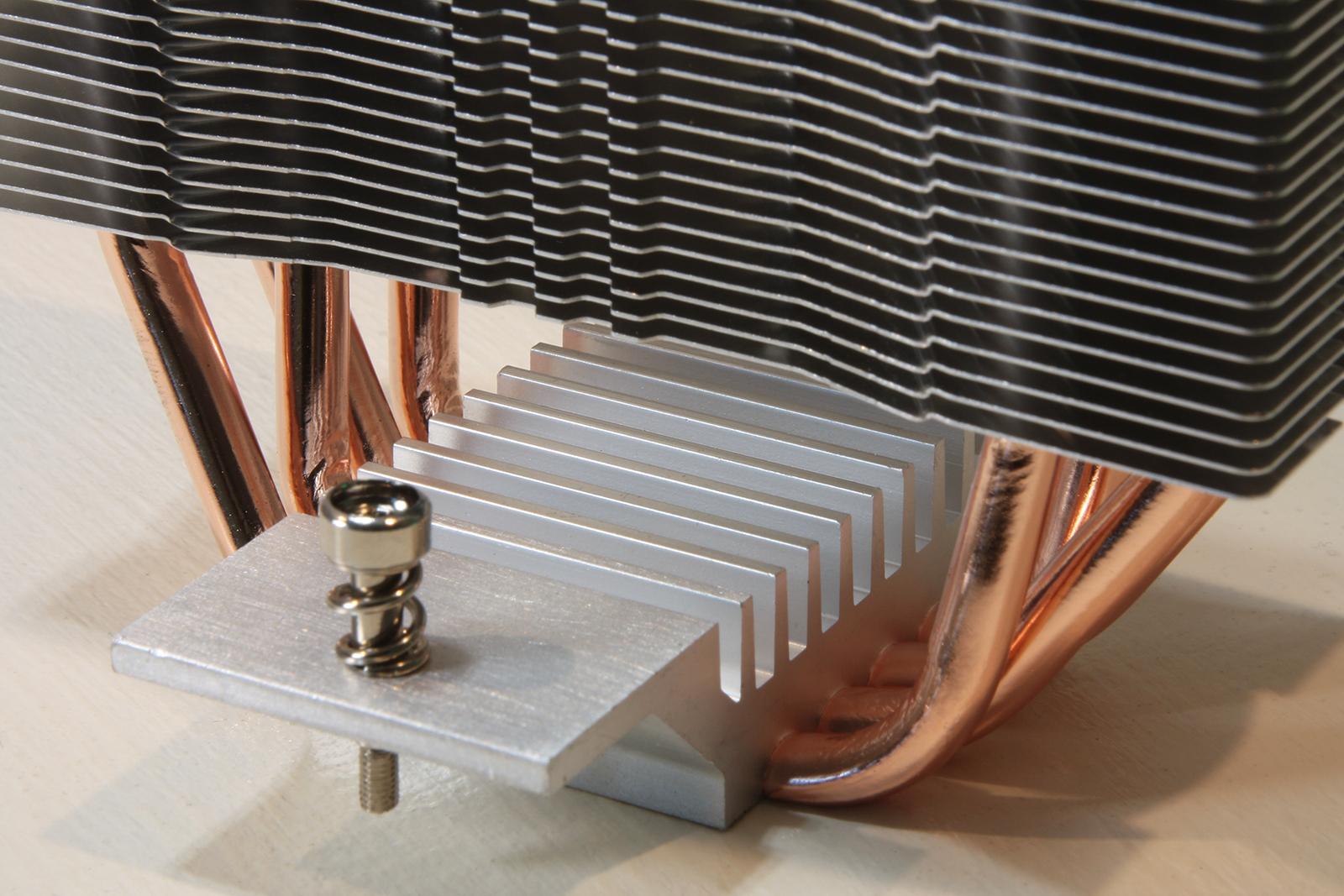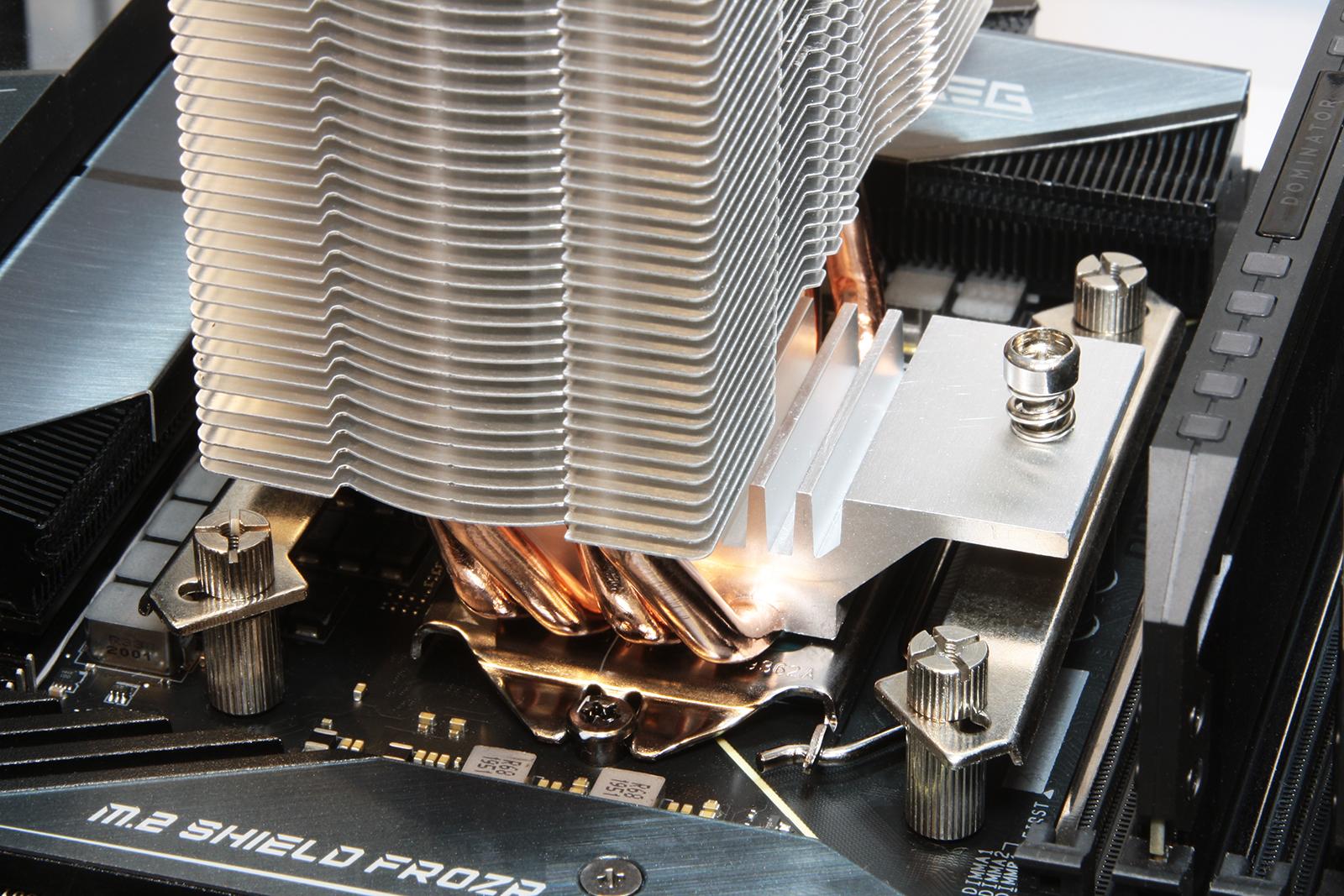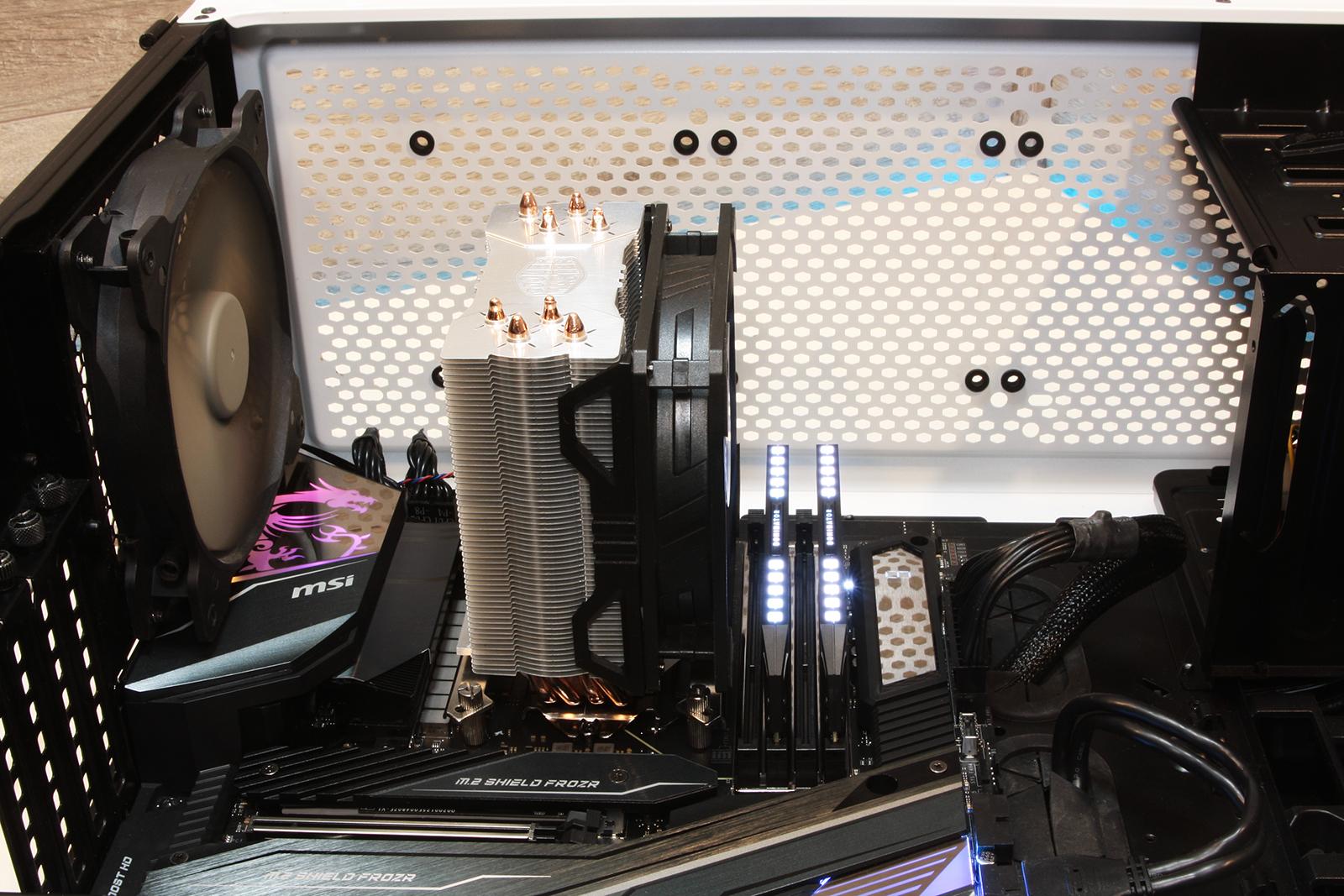Tom's Hardware Verdict
Priced around $40 at release, the Hyper 212 Evo v2 is a fantastic frugal option with a surprising amount of cooling potential, and makes a great choice for first time system builders or budget PCs. However, if you’re considering performance CPUs with high core counts or strong overclocks, we advise to temper your expectations or seek a more capable solution.
Pros
- +
Budget pricing
- +
Simplified installation over previous versions
- +
Silent operation
Cons
- -
Better suited for entry-level or mid-range CPUs
- -
Struggles with high-core count CPUs at overclocked speeds
Why you can trust Tom's Hardware
The newly updated Hyper 212 looks to tug at the heartstrings of many system builders from over a decade, who may recall countless tech sites spouting consistent praise and community recommendations for the original Hyper 212 product line as a budget air-cooling option. Much like its earlier predecessors, the new Hyper 212 Evo v2 aims for the sweet spot of budget performance potential, with the latest version finding itself amidst a large selection of competitive alternatives.
Specifications
| Height | 6.25" / 158.8mm |
| Width | 4.75" |
| Depth | 2.0" / 50.1mm, (3.25" / 82.6mm w/fan) |
| Base Height | 1.38" / 35.1mm |
| Assy. Offset | 0.5" / 12.7mm (rear), (0.5" /12/7mm forward w/fan) |
| Cooling Fans | (1) 120 x 25mm |
| Connectors | (1) 4-pin PWM |
| Weight | 23.4 oz / 662g |
| Intel Sockets | 775, 115x, 1366, 2011x, 2066, 1200 |
| AMD Sockets | FM2(+), FM1, AM2(+), AM3(+), AM4 |
| Warranty | 2 years |
| Web Price | $40 |
Features

The Hyper 212 Evo v2 does away with the swing-arm flex mount bracket and makes use of a fixed torsion bar, which greatly simplifies mounting and installation of the cooler. Cooler Master provides hardware to support most Intel and AMD CPU sockets, although Threadripper is not among them. A set of additional fan mounting hardware is included for users seeking to add an additional fan to the Hyper 212 Evo v2 for push/pull airflow, a PWM splitter for dual fan operation and a syringe of thermal compound round out the boxed accessories.
Cooler Master covers the Hyper 212 Evo v2 with a 2 year product warranty.

Cooler Master provides an updated SickleFlow 120 fan rated to 1800 RPM for use on the new 212 Evo v2, which ships with mounting clips pre-installed. The face of the fan hub is adorned with a holographic logo.,However, the cooling fan does not offer RGB/aRGB lighting as Cooler Master appears to be sticking with the original Hyper 212 theme of budget-minded minimalism.

The cooling fin stack looks very similar to the Hyper 212 models of years past, but with some improvements. A milled aluminum mounting block is fixed to the heatpipes of the Evo v2 and provides much needed relief from the struggles of installing the original 212’s with the adjustable swing arm mount. The cross-section of the cooling tower reveals offset heatpipes and an ‘open’ fin stack which allows airflow to escape at any angle.

The milled aluminum base has an aggressive saw-tooth milling that allows it to function not only as a mounting plate, but also to aid as additional thermal dissipation. The tension mounting screws are maintained with washer clamps, further adding to the improved mounting system.

A set of four copper heatpipes provides the cooling power for the Hyper 212 EVO v2, which are integrated with the aluminum mounting plate and milled flush for CPU IHS direct-contact. The underside of the mounting block shows the securing clips for the tension mounting screws as well as the heatpipe integration into the cooling fin stack.
Get Tom's Hardware's best news and in-depth reviews, straight to your inbox.

The milled base of the Hyper 212 EVO v2 is visibly perfect using a steel straightedge for comparison. We see no evidence of convexity or concavity.

The base of the cooler mated well with the face of our Intel Core i9-10850K CPU IHS and provided a quality thermal compound spread, showing consistent contact across the entirety of the processor with all four heatpipes directly interfaced.

The updated mounting hardware for the new Cooler Master Hyper 212 Evo v2 allows for a simpler installation than some of the older 212 models. The fixed mounting plate provides good stability to provide almost automatic alignment of the tension screws and the mounting brackets without rocking or twisting.

The last step of installation is to add the SickleFlow 120 fan by snapping the retention brackets around the cooling tower and finding the appropriate 4-pin PWM header for fan management. With taller memory DIMMs like our Corsair Dominator Platinum modules, we can easily see how fan clearance can be an issue for systems using memory and tall heat spreaders, so take this into account.
While the fan mount itself is adjustable, moving the 120mm fan also raises the airflow up and over the top of the cooler, lowering the efficiency of the cooler itself. Less airflow through the cooling fins means a lowered thermal load potential.
- 1
- 2
Current page: Features and Specifications
Next Page Comparison Coolers, Testing Results and Conclusion
Garrett Carver is a contributor for Tom’s Hardware, primarily covering thermal compound comparisons and CPU cooling reviews; both air and liquid, including multiple variations of each.
-
tennis2 Pretty big stretch to call this an Evo V2 when it doesn't have the flatted full coverage heatpipes of the original Evo.Reply -
Johnpombrio I have the Hyper 212 EVO black edition which has a very similar mounting system. It works fine as long as I don't go crazy overclocking the CPU. With a i9-9900K and a 4.6GHz OC, I can run the fan at low speeds and have the temp max out at around 70C. Nice and quiet and good enough for me! The black looks nice had the RGB fan hooked to my ASUS mobo rolls slowly through the colors.Reply -
Johnpombrio Reply
Hmm, there are several ways the Hyper 212 have had the heat pipes attached to the bottom plate over the years. The original one had round heatpipes at the base with gaps, then they went to flattened and polished with gaps, then they went to flattened, polished and right next to one another, then for the black and the V2 version, they have flattened and polished with a bit of a gap between the heatpipes and the base. With the base now acting as it OWN radiator with fins, this last setup would be MORE effecient to remove heat. Both the V2 and the RGB black editions are my current recommendations, but all of the hyper 212s have been great coolers.tennis2 said:Pretty big stretch to call this an Evo V2 when it doesn't have the flatted full coverage heatpipes of the original Evo. -
AtotehZ Reply
A Noctua NH-D15 on a 9900k maxes out in the 70's degrees with no OC.Johnpombrio said:I have the Hyper 212 EVO black edition which has a very similar mounting system. It works fine as long as I don't go crazy overclocking the CPU. With a i9-9900K and a 4.6GHz OC, I can run the fan at low speeds and have the temp max out at around 70C. Nice and quiet and good enough for me! The black looks nice had the RGB fan hooked to my ASUS mobo rolls slowly through the colors.
You'll be throttling in any stress test with a Hyper 212 EVO on a 9900k. Even if you're running max fan speed.
It boils down to this. You need to dissipate around 200W of heat if you're running at 4.6 Ghz and your cooler has a TDP of 150W. You'll never get full performance out of a 9900k with your Hyper 212 EVO.
Oh and also.. while waiting for my NH-D15 to arrive I was running the Hyper 212 EVO from my old computer on my new 9900k. It took less than 30 secs sustained load for it to throttle at stock settings. That means you're throttling during most compiling, encoding, decompression and some gaming scenarios. -
Johnpombrio AtotehZ, What? You must have some miserable i9-9900K if you cannot get 4.6GHz at 70C with full CPU load. He is mine. I have the CPU fan on my Hyper 212 RGB Black set to 30% ALL THE TIME so it is always quiet. Here are my results (only visible on the forum page). Seriously something wrong with your results. Redo your thermal paste and make sure the cooler is firmly set on the heat spreader. My results are typical for pretty much all users of the i9-9900K on air. PS running longer does NOT heat soak the cooler and it is extremely stable with these being very typical temps over hours of running.Reply
-
eklipz330 overpriced at $40, i'd say it needs to be <$25 to be a decent value. $10 more can get you a scythe mugen($50) which is an extremely highly regarded air cooler, and you can barely get better than that in general.Reply -
Phaaze88 Reply
It's somewhat amusing to see people post AIDA 64 results only to find out that they checked off all, or almost all, those boxes.Johnpombrio said:AtotehZ, What? You must have some miserable i9-9900K if you cannot get 4.6GHz at 70C with full CPU load. He is mine. I have the CPU fan on my Hyper 212 RGB Black set to 30% ALL THE TIME so it is always quiet. Here are my results (only visible on the forum page). Seriously something wrong with your results. Redo your thermal paste and make sure the cooler is firmly set on the heat spreader. My results are typical for pretty much all users of the i9-9900K on air. PS running longer does NOT heat soak the cooler and it is extremely stable with these being very typical temps over hours of running.
FPU only is actually the heaviest cpu load from that app. -
Johnpombrio OK Phazz, here is the result using Prime. the temps are actually lower. What test do you WANT me to run?Reply
-
AtotehZ Reply
What's more likely is that the temps in your system aren't being reported correctly and you're shortening the lifespan of your hardware.Johnpombrio said:OK Phazz, here is the result using Prime. the temps are actually lower. What test do you WANT me to run?
It is an undeniable fact that a Hyper 212 EVO black edition is a 150W TDP cooler and the 9900k draws 200W+ at stock. You really should check that out.
EDIT: Oh and if you really wanna know which test to run. Prime95 "Small FFT's" is the one to use to push the CPU. If you use "Blend" you should run it till it's gone through all the tests to make sure. Exactly how long that takes I don't remember, but it's more than 30 mins.
I do remember however that "Blend" starts with Large FFT's, which... read the description.
You should also get a program that watches the power draw. It should be 200W+. It might even be 225W. Personally I use Core Temp for that.